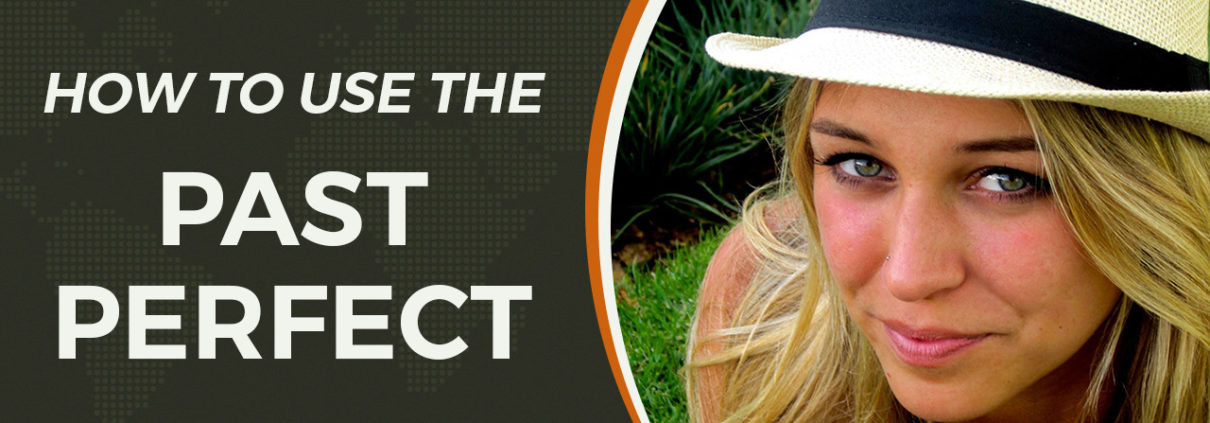
English grammar can be a bit tricky (hard) for non-native speakers, and the Past Perfect Tense is no exception. Even though it is called the past ‘perfect’ tense, learning how to use it does not always happen ‘perfectly’!
However, with some hard work and practice, you will be able to fully understand how to use this tense and use it during conversations.
Watch the video and then, read on and I can help you to ‘perfect’ this tense!
What is the Past Perfect?
The Past Perfect Tense refers to something that occurred in the past, before another action in the past. In other words, it expresses one event that was completed before another past event.
Basically, when we use the past perfect, we are referring to a time earlier than before right now. It sounds complicated but it is really quite simple.
In this example, Event A happened first and Event B happened more recently.
Event A: I already had eaten 7 pancakes
Event B: when my friends got to the restaurant.
Both events occurred in the past, but Event A happened before Event B.
In retrospect, it was probably rude that I ate 7 pancakes before my friends arrived at the restaurant to meet me. I guess I was just really hungry and I really like pancakes!
Past Perfect Structure
To form a sentence in the Past Perfect Tense, start with the subject followed by the auxiliary verb ‘to have’ conjugated in the past simple. Then, use the past participle form of the main verb.
Subject + had + past participle
Here are a few examples:
- He had jumped into the water before she told him how cold it was.
- They hadn’t locked the door before their friend arrived.
- Had you already seen the monkeys when the safari ended?
- I had finished the race before he was halfway finished.
Past Perfect Continuous
The Past Perfect Continuous Tense is very similar to the Past Perfect Tense. We use it to express something that started in the past and continued until another event happened in the past.
In other words, it is a continuous occurrence in the past that stopped at another specific point in the past.
Instead of being a finite past action, it refers to an something ongoing in the past.
In this example, Event A started first and continued until Event B occurred.
Event A: I had been laughing for an hour
Event B: when my friend told me to stop.
Both events happened in the past. I had been laughing for the duration of one hour. My laughing continued until my friend told me to stop. My friend’s joke must have been incredibly funny!
Past Perfect Continuous Structure
The Past Perfect Continuous structure should be pretty simple for you because it starts in the exact same way as the Past Perfect Tense!
Begin with the subject followed by the auxiliary verb “to have” conjugated in the past simple. This is followed by the past participle form of the verb “to be” and then the present continuous form of the main verb.
Subject + had + been + present continuous …
Here are a few examples:
- We had been working for six hours when our boss told us to go home.
- Had you already been waiting for a bus when she told you she could give you a ride?
- I had not been eating for eight hours when she finally served dinner.
- She had been shopping for almost an hour when she got an important phone call.
Compared to Other Tenses
It is important not to mix up the Past Perfect Tense with the Present Perfect Tense because it would lead to confusion! The meanings are very different.
While the Past Perfect Tense refers to something that happened in the past before another past event, the Present Perfect Tense refers to something that started in the past and continues into the present.
To help you remember the difference here is an easy trick:
In the PAST Perfect, the past action occurs before another PAST action.
In the PRESENT Perfect, the action started in the past and continues to the PRESENT.
In other words:
In the PAST Perfect, the reference point is the PAST.
In the PRESENT Perfect, the reference point is the PRESENT.
Past Perfect Passive
The Past Perfect Passive has the exact same meaning as the Past Perfect Tense. The only difference is that it is in the passive voice.
The word order and structure are slightly different.
Object + had + been + past participle ….
Here are a few examples:
- The dog had been carried outside by the time she arrived.
- Lunch had been prepared before any guests were hungry.
- Had the bank been robbed before the shop was robbed?
- I had not been asked to the dance when he decided to ask me.
As you can see, the meaning is the same! However, the object comes first, instead of the subject, because we are using the passive voice.
Thanks for reading




Very Informative, Thanks
Any one want to improving english with live chat or caling so join my whatsapp group learning english my whatsapp group numbr is +923046885934
I am having a hard time with past tenses, so I really appreciate this article. It’s clear and the examples are simple, so that everyone can understand. You even thought of question form. Thank you, very helpful!
Any one want to improving english with live chat or caling so join my whatsapp group learning english my whatsapp group numbr is +923046885934